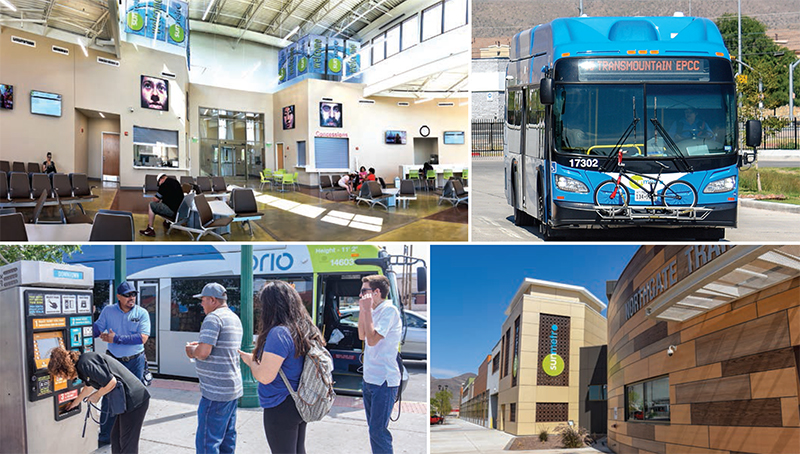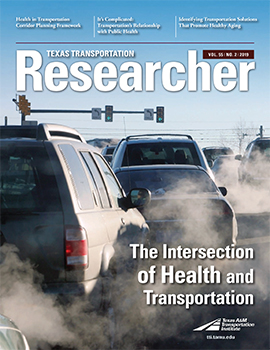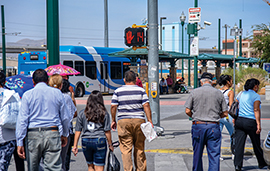Leaving your keys on the counter, you shut the door and head out for the new bus rapid transit (BRT) station. The sun is warm on your skin. Your muscles warm as you walk. A little footwork on days like today beats sitting in traffic congestion or waiting for what seems like forever on the city bus.
Improving cardiovascular health is a particularly relevant topic in El Paso, Texas, where approximately 16 percent of adult residents are diabetic, and 34 percent struggle with obesity. However, there has been little research into the health benefits encouraged by BRT lines, which provide improved transit services using modern vehicles, high trip frequency and other amenities, such as bike racks in stations and on buses.

The Texas A&M Transportation Institute’s (TTI’s) Center for International Intelligent Transportation Research teamed up with Texas A&M University’s Department of Landscape Architecture and Urban Planning (LAUP) to determine if El Pasoans are willing to walk farther as part of their daily travel after the implementation of a BRT line in the Alameda corridor (14.5 miles and 29 stations). The BRT line, which will be completed by the end of 2019, will be the second BRT line in El Paso.
“The new BRT lines are on the leading edge of public transportation, improving the service for residents and making it more comfortable and convenient to travel. The project evaluates the potential health, environmental and time-saving travel benefits for residents who use the BRT service,” says TTI Assistant Research Scientist David Galicia.
For many people, daily physical activity often consists of walking to get into the car or to and from an office building. By taking the BRT option, they may walk or bike from their home to a transit station, thereby increasing the distance they walk or ride every day (and, in theory, their heart health). To attract residents to try out the BRT alternative, researchers are considering transit-oriented multilevel intervention strategies, representing three socio-ecological domains: access, education and cost.
“Development of bus rapid transit lines in El Paso, Texas, presents an opportunity to explore transit-oriented multilevel interventions, addressing diverse, synergistic strategies that can contribute to increased physical activity and mobility,” says Texas A&M LAUP Professor Chanam Lee. The project leads include Lee, LAUP Associate Professor Wei Li, and Regent and Distinguished Professor Marcia Ory from Texas A&M’s School of Public Health. “Creating awareness of the level of physical activity associated with BRT lines will inform the next decade of transportation needs and choices made by residents.”
The project is currently in the data collection process, the first of three phases. The goal is to compare before-and-after scenarios of implementing the Alameda corridor BRT line. TTI’s role is to conduct onboard surveys with BRT riders using Sun Metro, El Paso’s metro transit system. Researchers are employing a citizen science strategy — where members of the public participate in the investigative process — to acquire data on daily ridership, routes and destinations. After this phase, TTI’s team will produce a computer-based model to assess current conditions and build-out scenarios.
The ultimate plan is to have four corridors in El Paso connecting the entire city with BRT lines. It’s hoped that residents will leave more of their cars at home and adopt healthier walking and biking habits. If residents live and/or work along the new stops and terminals, they can save gas, access the internet while traveling, and get in steps toward improved cardiovascular health along the way, all while reducing congestion. Researchers will forecast ridership for the next 10 years to predict the longer-term footprint of implementation for the community.
“Weighed down by busy schedules, people often struggle to find the time or energy for physical activity,” says National Cancer Institute (NCI) Biologist David Berrigan. NCI is part of the project’s sponsor, the National Institutes of Health. “The BRT line has the potential to attract El Paso residents with the incentive of faster, more productive travel and the added benefits of more daily walking and biking and more environmentally friendly transportation.”

